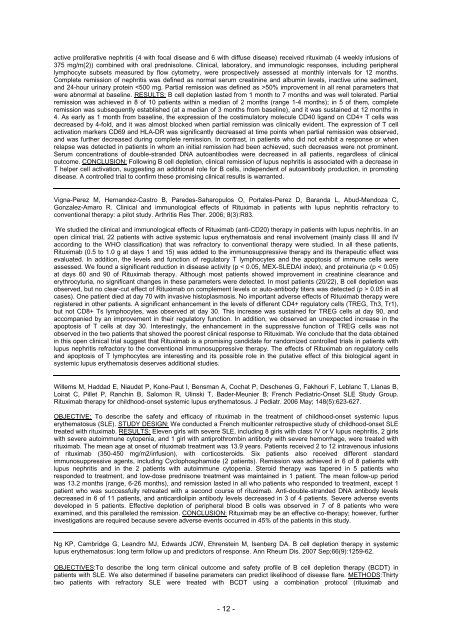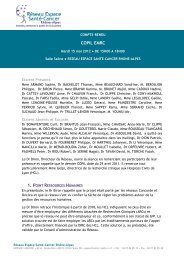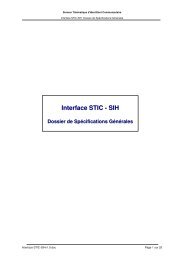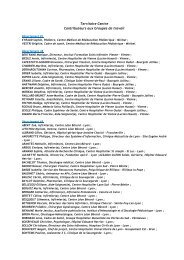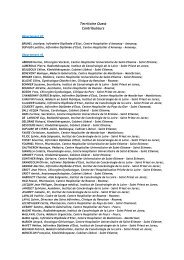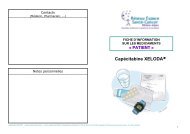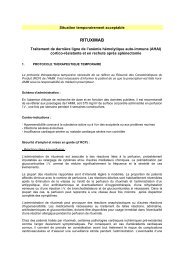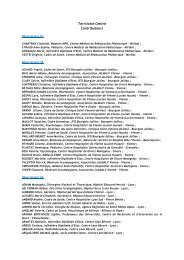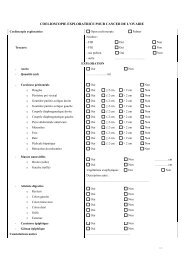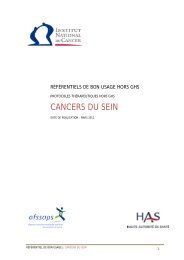rituximab
rituximab
rituximab
You also want an ePaper? Increase the reach of your titles
YUMPU automatically turns print PDFs into web optimized ePapers that Google loves.
active proliferative nephritis (4 with focal disease and 6 with diffuse disease) received <strong>rituximab</strong> (4 weekly infusions of375 mg/m(2)) combined with oral prednisolone. Clinical, laboratory, and immunologic responses, including peripherallymphocyte subsets measured by flow cytometry, were prospectively assessed at monthly intervals for 12 months.Complete remission of nephritis was defined as normal serum creatinine and albumin levels, inactive urine sediment,and 24-hour urinary protein 50% improvement in all renal parameters thatwere abnormal at baseline. RESULTS: B cell depletion lasted from 1 month to 7 months and was well tolerated. Partialremission was achieved in 8 of 10 patients within a median of 2 months (range 1-4 months); in 5 of them, completeremission was subsequently established (at a median of 3 months from baseline), and it was sustained at 12 months in4. As early as 1 month from baseline, the expression of the costimulatory molecule CD40 ligand on CD4+ T cells wasdecreased by 4-fold, and it was almost blocked when partial remission was clinically evident. The expression of T cellactivation markers CD69 and HLA-DR was significantly decreased at time points when partial remission was observed,and was further decreased during complete remission. In contrast, in patients who did not exhibit a response or whenrelapse was detected in patients in whom an initial remission had been achieved, such decreases were not prominent.Serum concentrations of double-stranded DNA autoantibodies were decreased in all patients, regardless of clinicaloutcome. CONCLUSION: Following B cell depletion, clinical remission of lupus nephritis is associated with a decrease inT helper cell activation, suggesting an additional role for B cells, independent of autoantibody production, in promotingdisease. A controlled trial to confirm these promising clinical results is warranted.Vigna-Perez M, Hernandez-Castro B, Paredes-Saharopulos O, Portales-Perez D, Baranda L, Abud-Mendoza C,Gonzalez-Amaro R. Clinical and immunological effects of Rituximab in patients with lupus nephritis refractory toconventional therapy: a pilot study. Arthritis Res Ther. 2006; 8(3):R83.We studied the clinical and immunological effects of Rituximab (anti-CD20) therapy in patients with lupus nephritis. In anopen clinical trial, 22 patients with active systemic lupus erythematosis and renal involvement (mainly class III and IVaccording to the WHO classification) that was refractory to conventional therapy were studied. In all these patients,Rituximab (0.5 to 1.0 g at days 1 and 15) was added to the immunosuppressive therapy and its therapeutic effect wasevaluated. In addition, the levels and function of regulatory T lymphocytes and the apoptosis of immune cells wereassessed. We found a significant reduction in disease activity (p < 0.05, MEX-SLEDAI index), and proteinuria (p < 0.05)at days 60 and 90 of Rituximab therapy. Although most patients showed improvement in creatinine clearance anderythrocyturia, no significant changes in these parameters were detected. In most patients (20/22), B cell depletion wasobserved, but no clear-cut effect of Rituximab on complement levels or auto-antibody titers was detected (p > 0.05 in allcases). One patient died at day 70 with invasive histoplasmosis. No important adverse effects of Rituximab therapy wereregistered in other patients. A significant enhancement in the levels of different CD4+ regulatory cells (TREG, Th3, Tr1),but not CD8+ Ts lymphocytes, was observed at day 30. This increase was sustained for TREG cells at day 90, andaccompanied by an improvement in their regulatory function. In addition, we observed an unexpected increase in theapoptosis of T cells at day 30. Interestingly, the enhancement in the suppressive function of TREG cells was notobserved in the two patients that showed the poorest clinical response to Rituximab. We conclude that the data obtainedin this open clinical trial suggest that Rituximab is a promising candidate for randomized controlled trials in patients withlupus nephritis refractory to the conventional immunosuppressive therapy. The effects of Rituximab on regulatory cellsand apoptosis of T lymphocytes are interesting and its possible role in the putative effect of this biological agent insystemic lupus erythematosis deserves additional studies.Willems M, Haddad E, Niaudet P, Kone-Paut I, Bensman A, Cochat P, Deschenes G, Fakhouri F, Leblanc T, Llanas B,Loirat C, Pillet P, Ranchin B, Salomon R, Ulinski T, Bader-Meunier B; French Pediatric-Onset SLE Study Group.Rituximab therapy for childhood-onset systemic lupus erythematosus. J Pediatr. 2006 May; 148(5):623-627.OBJECTIVE: To describe the safety and efficacy of <strong>rituximab</strong> in the treatment of childhood-onset systemic lupuserythematosus (SLE). STUDY DESIGN: We conducted a French multicenter retrospective study of childhood-onset SLEtreated with <strong>rituximab</strong>. RESULTS: Eleven girls with severe SLE, including 8 girls with class IV or V lupus nephritis, 2 girlswith severe autoimmune cytopenia, and 1 girl with antiprothrombin antibody with severe hemorrhage, were treated with<strong>rituximab</strong>. The mean age at onset of <strong>rituximab</strong> treatment was 13.9 years. Patients received 2 to 12 intravenous infusionsof <strong>rituximab</strong> (350-450 mg/m2/infusion), with corticosteroids. Six patients also received different standardimmunosuppressive agents, including Cyclophosphamide (2 patients). Remission was achieved in 6 of 8 patients withlupus nephritis and in the 2 patients with autoimmune cytopenia. Steroid therapy was tapered in 5 patients whoresponded to treatment, and low-dose prednisone treatment was maintained in 1 patient. The mean follow-up periodwas 13.2 months (range, 6-26 months), and remission lasted in all who patients who responded to treatment, except 1patient who was successfully retreated with a second course of <strong>rituximab</strong>. Anti-double-stranded DNA antibody levelsdecreased in 6 of 11 patients, and anticardiolipin antibody levels decreased in 3 of 4 patients. Severe adverse eventsdeveloped in 5 patients. Effective depletion of peripheral blood B cells was observed in 7 of 8 patients who wereexamined, and this paralleled the remission. CONCLUSION: Rituximab may be an effective co-therapy; however, furtherinvestigations are required because severe adverse events occurred in 45% of the patients in this study.Ng KP, Cambridge G, Leandro MJ, Edwards JCW, Ehrenstein M, Isenberg DA. B cell depletion therapy in systemiclupus erythematosus: long term follow up and predictors of response. Ann Rheum Dis. 2007 Sep;66(9):1259-62.OBJECTIVES:To describe the long term clinical outcome and safety profile of B cell depletion therapy (BCDT) inpatients with SLE. We also determined if baseline parameters can predict likelihood of disease flare. METHODS:Thirtytwo patients with refractory SLE were treated with BCDT using a combination protocol (<strong>rituximab</strong> and- 12 -


